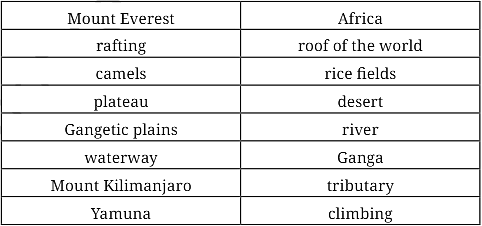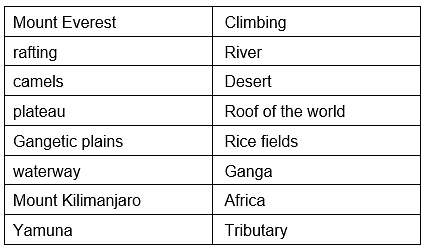Chapter 02 Oceans and Continents Solutions
November 5, 2024Chapter 04 Timeline and Sources of History Solutions
November 5, 2024Chapter 03 Landforms and Life Text Book Solutions
The Big Questions (Page 41)
Q1: What are the major types of landforms and their significance to life and culture?
Ans: The major types of landforms are mountains, plateaus, and plains.
- Mountains: These landforms are significant as they influence climate and weather patterns, provide habitats for diverse flora and fauna, and offer resources such as fresh water from melting snow. Mountains hold cultural significance in many regions, often considered sacred and are popular for tourism and recreational activities.
- Plateaus: Plateaus are known as storehouses of minerals and have varied climates and environments. They are important for mining activities and can support agriculture if the soil is fertile, particularly in volcanic regions with rich black soil. Plateaus also house spectacular waterfalls, adding to their scenic and economic value.
- Plains: Plains are vital for agriculture due to their fertile soils, which result from sediment deposits by rivers. They support large populations and are centers of human civilization, offering suitable conditions for farming, settlement, and transportation.
Q2: What are the challenges and opportunities of life associated with each landform?
Ans:
- Mountains:
- Challenges: Harsh climates, difficulty in transportation, limited agricultural land, risk of natural disasters like avalanches and landslides.
- Opportunities: Tourism, winter sports, mountaineering, cultural significance, water sources from glaciers and rivers.
- Challenges: Harsh climates, difficulty in transportation, limited agricultural land, risk of natural disasters like avalanches and landslides.
- Plateaus:
- Challenges: Less fertile soil compared to plains, rocky terrain, harsh climates in some regions.
- Opportunities: Rich mineral deposits leading to mining activities, scenic waterfalls attracting tourism, unique flora and fauna.
- Challenges: Less fertile soil compared to plains, rocky terrain, harsh climates in some regions.
- Plains:
- Challenges: Risk of flooding, high population density leading to pollution and resource depletion, dependency on rainfall or irrigation for agriculture.
- Opportunities: Fertile land for agriculture, suitable for large human settlements, easy transportation and trade routes, diverse economic activities like farming and fishing.
- Challenges: Risk of flooding, high population density leading to pollution and resource depletion, dependency on rainfall or irrigation for agriculture.
Back Questions (Page 58)
Q1: In what type of landform is your town/village/city located? Which features mentioned in this chapter do you see around you?
Ans: The type of landform your town/village/city is located in can vary. For example, it could be in a plain, mountainous, or plateau region. Specific features would depend on the local geography, such as rivers, hills, or flat agricultural land.
Q2: Let us go back to our initial trip from Chhota Nagpur to Prayagraj and Almora. Describe the three landforms you came across on the way.
Ans: On the trip from Chhota Nagpur to Prayagraj and Almora, the three major landforms encountered are:
- Chhota Nagpur: A plateau known for its mineral resources.
- Prayagraj: Located in the plains, specifically the fertile Ganga plain.
- Almora: A mountainous region, part of the Himalayas.
Q3: List a few famous pilgrimage spots in India along with the landforms in which they are found.
Ans:
- Varanasi: Located in the plains along the Ganga river.
- Amarnath: Located in the mountainous region of the Himalayas.
- Tirupati: Located in the Eastern Ghats, a hilly region.
- Vaishno Devi: Located in the Trikuta Mountains in the Himalayas.
Q4: State whether true or false —
- The Himalayas are young mountains with rounded tops.
Ans: False
- Plateaus usually rise sharply at least on one side.
Ans: True.
- Mountains and hills belong to the same type of landform.
Ans: True.
- Mountains, plateaus and rivers in India have the same types of flora and fauna.
Ans: False.
- Ganga is a tributary to the Yamuna.
Ans: False.
- Deserts have unique flora and fauna.
Ans: True.
- Melting snow feeds rivers.
Ans: True.
- Sediments from rivers deposited in the plains make the land fertile.
Ans: True.
- All deserts are hot.
Ans: False
Q5: Match words in pairs:

Ans:


